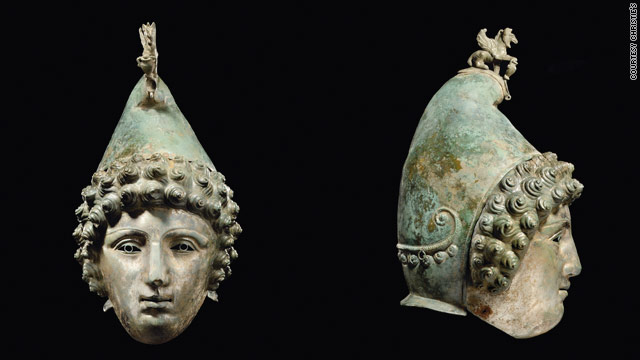Human feces a weapon of mass destruction?
 Image via Wikipedia
Image via WikipediaI had never read about this particular siege or its outcome before so was appalled at the level of desperation the Romans must have reached to engage in these last ditch efforts to stave off hunger. But as I thought about these poor unfortunate wretches, I got to wondering about whether the items mentioned would really produce a mass poisoning. Since all three items were mentioned, I assume there was not a definitive consensus about which of the three caused the fatalities. So I began to research this issue further.
I learned that coprophagia, from the Greek copro which means feces and phagy which means eat, is common among some animals, particularly dogs. That's why I've had to scold my little dachshunds for attempting to scarf down cat feces when they dig them up in the yard. Veterinarians are not really sure why dogs engage in this disgusting behavior although it does appear to increase in frequency in cases of severe disorders of the pancreas (pancreatic insufficiency) or intestine, severemalnutrition from massive parasitic infestations, or starvation. (I assure you my little dogs are rather pudgy from my husband feeding them too many snacks so they don't have that excuse!)
I also learned that in ancient times physicians would taste the excrement of their patients to try to determine their state of health. (I knew there was a reason I decided against becoming a medical doctor) I also read about the Bedouin using the consumption of warm camel feces as a treatment for bacterial dysentery.
So, as revolting as it sounds, apparently some people have eaten feces without initial harm although long term diseases can be contracted such as E. coli, Hepatitis A, Hepatitis E, pneumonia, polio, influenza
and internal parasites. But it doesn't sound like coprophagia could be the cause of an observed wide-spread poisoning.
So I started exploring the effects of eating nettles. But I learned that nettles, even stinging nettles, actually have an edible bulb and, although the ancients may have only recorded that the inhabitants of the beseiged town were gathering nettles, they may not have realized they were only eating the tuber and not the "nettlesome" foliage. So that leaves acorns as the only remaining suspect.
Acorns have been used as a protein-rich food source by both wildlife and humans for centuries although acorns from some species like red oak are high in tannic acid that must be leeched out by soaking them first. But processed acorns are susceptible to mold when stored. Perhaps it was mold, then, that actually precipitated the poisonings, not the consumption of acorns itself. Of course, poison concoctions could have been manually applied to potential foodstuffs and left where they could have been easily "stolen" by desperate townsfolk but the ancient sources were not admitting to anything like that. Hmmm....
In this updated introduction to her book (it was written to coincide with a 2008 paperback re-release of her original work ) Mayor also mentioned that archaeologists found the remains of an ancient concoction termed "Mithridatium" in the bottom of a vat in a Roman villa near Pompeii in 2007.
"Tests of the residue, published in 2007, revealed a mixture of powerful medicinal plants, including opium poppy seeds, along with the flesh and bones of reptiles. Was this an ancient witch’s poisonous brew? Quite the contrary; according to the archaeologists, the vat may have been used to prepare a secret “universal antidote” believed to counteract all known poisons.I somehow missed hearing about this fascinating discovery back in 2007. For 38 pages of similarly intriguing examples, I encourage you to read her "New Introduction" available online from Stanford.This concoction, a combination of small doses of poisons and their antidotes, called Mithridatium, had been invented by King Mithridates VI of Pontus, a brilliant military strategist and master of toxicology, about one hundred years earlier. His recipe was perfected by theEmperor Nero’s personal physician and became the world’s most sought-after antidote, long prescribed for European royalty." - Adrienne Mayor
Image via Wikipedia
Mithradates VI "The Poison King" of Pontus
Related articles
- Bones of the Gigantomachy(bldgblog.blogspot.com)















 By Melissa Gray, CNN
By Melissa Gray, CNN


